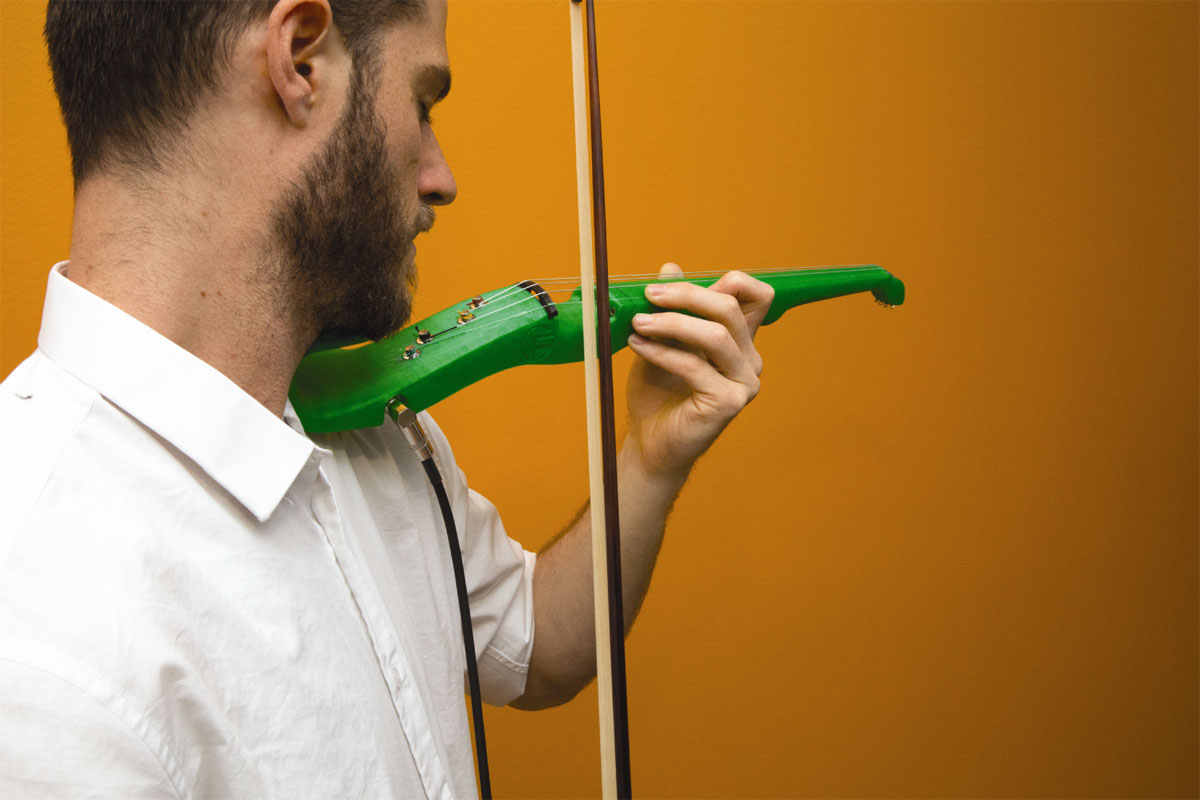3D-print a full-size electric violin, then plug in and play.
The F-F-Fiddle (pronounced EFF-EFF-Fiddle) is a full-size electric violin, designed in Autodesk’s Fusion 360, that can be made on a desktop 3D printer — the fused-filament fabrication (FFF) type. All parts can be printed without support material, and the finished fiddle is fully functional and fun to play!

The current fiddle is the seventh physical prototype and the eighth revision of the design. Each prototype was played and improved for playability. I’m still iterating, and each F-F-Fiddle is a little nicer to play. It sounds good, and I’m ready for others to try it!
Here you’ll find the most up-to-date assembly instructions. Check openfabpdx.com/fffiddle for project updates and to order a kit. If you order a kit, just mention that you saw the project on MAKE for 10% off! In preparation for your build, join the F-F-Fiddle Builder’s Google Group to offer your feedback and get assistance from other builders. Happy F-F-Fiddling!




